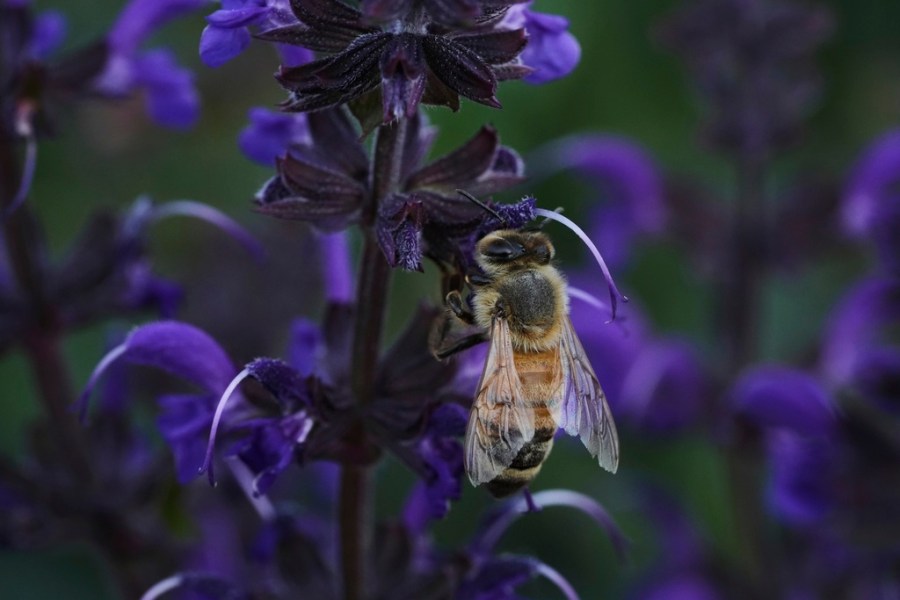Bees in Peril: A Warming World Threatens Their Survival

The Struggle of Bees in a Warming World
Isaac Barnes, a beekeeper from Ohio, wipes the sweat from his face as he carries boxes of honeycomb from his hives to his truck. The June heat is intense, making the environment feel like a sauna. For Barnes, the physical effort is just part of the job, but for his bees, the challenge is even greater. Their body temperatures can be up to 27 degrees Fahrenheit (about 15 Celsius) higher than the surrounding air. As global temperatures rise due to climate change, scientists are increasingly concerned about how these changes affect managed and wild bee populations.
Research published last year revealed that flying bees adjust their behavior on the hottest days by using fewer but more forceful wingbeats to prevent overheating. Scientists also observed that bees, much like humans, may seek cooler environments such as shade or their nests to avoid extreme heat. Jon Harrison, an environmental physiologist at Arizona State University and one of the study’s authors, explained that this behavior is similar to how people cope with heat—by seeking shade, sweating, or reducing activity.
However, this adaptation has consequences. Kevin McCluney, a biology professor at Bowling Green State University, pointed out that when bees retreat from the heat, they aren’t able to perform essential tasks such as gathering nectar, mating, or caring for their young. This disruption can have far-reaching effects on bee colonies and the ecosystems they support.
Climate Change and the Challenges Facing Pollinators
Heat is just one of many challenges facing bees, which play a critical role in pollinating crops and maintaining biodiversity. While most bees are heat-tolerant, rising temperatures could make it harder for them to resist diseases, find food, and reproduce. Habitat loss, increased pesticide use, and a lack of diverse forage are also contributing to the decline of both managed and wild bee populations.
Margarita López-Uribe, a pollinator health expert at Pennsylvania State University, emphasized that bees that are already weakened by poor nutrition, pesticide exposure, or disease are less able to handle heat stress. “If you’re not well-fed, and your body is intoxicated with pesticides and you have lots of diseases in your body, you’re going to be less heat-tolerant than if you were healthy,” she said.
Recent data from the U.S. Beekeeping Survey showed that beekeepers lost nearly 56% of their managed colonies in 2023, the highest loss since the survey began in 2010. Most of these colonies are used to pollinate high-value crops like almonds, apples, cherries, and blueberries. A decline in pollinators could lead to reduced crop yields, affecting food availability and prices.
The Impact on Honeyrun Farms
At Honeyrun Farm, where Isaac Barnes and his wife Jayne manage 500 hives, the effects of climate change are evident. High summer temperatures pose a particular challenge, as they limit the ability to apply formic acid—a treatment for parasitic mites that threaten the bees. If applied during hot weather, the chemical can harm or kill the bees.
Last year, Barnes lost almost a third of the 400 hives sent to California for almond pollination. He suspects that the heat earlier in the year may have left the hives in poor health, reducing their effectiveness during the critical pollination period. “Dead hives aren’t pollinating the almonds,” he said. “It’s a real ripple effect that stems back from the heat in the summertime.”
Despite the challenges, some aspects of the heat have been beneficial. During the summer, Barnes’ hives produced a large amount of honey, thanks to the blooming of soybean fields. However, the lack of plant diversity in the region remains a concern. Native plants like goldenrod, which bees rely on in the fall, are appearing later than usual, forcing Barnes to supplement the bees’ diet to ensure their survival through the winter.
Research Under Threat
The importance of studying bee behavior and resilience has grown in recent years, but funding for such research is under threat. Jon Harrison, who has been researching the impact of heat on bees, warned that federal budget cuts could halt critical studies. The proposed elimination of the USGS Bee Lab, which supports research on wild bees, is particularly concerning.
U.S. Senator Jeff Merkley of Oregon called the situation “grave” and pledged to fight for continued federal funding. “Rather than taking bold action to protect them, the Trump administration has proposed a reckless budget that would zero out funding for critical research aimed at saving important pollinators,” he said.
Harrison expressed concern that without funding, scientific efforts to understand and mitigate pollinator declines will suffer. “Not being able to manage these pollinator deaths could cause the price of fruits, vegetables, nuts, coffee and chocolate to jump or become scarce,” he said.
While the future of bee research in the U.S. remains uncertain, Harrison hopes that efforts will continue elsewhere. “Hopefully, even if such research is defunded in the U.S., such research will continue in Europe and China, preventing these extreme scenarios.”
Post a Comment for "Bees in Peril: A Warming World Threatens Their Survival"
Post a Comment